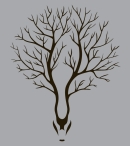Hello Guest, welcome to torrentinvites.org - Your #1 source for Torrent Invites!
CLICK HERE to register for free and gain full access to TI.org!
Torrent Invites! Buy, Trade, Sell Or Find Free Invites, For EVERY Private Tracker! HDBits.org, BTN, PTP, MTV, Empornium, Orpheus, Bibliotik, RED, IPT, TL, PHD etc!
 1Likes
1Likes
-
 1
Post By chapter7
1
Post By chapter7
-
Nations League draw: England face Spain & Croatia, Wales play Republic of Ireland
England will face Spain and Croatia in League A of the inaugural Uefa Nations League.
Wales were drawn alongside the Republic of Ireland and Denmark in League B, while Northern Ireland were grouped with Austria and Bosnia & Herzegovina.
Scotland, without a manager since Gordon Strachan left, were drawn in League C alongside Albania and Israel.
The first group games take place in September this year, with the finals scheduled for June 2019.
Wednesday's draw took place in Lausanne, Switzerland.
Groups in full:
| League A |
|---|
| Group one |
Group two |
Group three |
Group four |
| Netherlands |
Iceland |
Poland |
Croatia |
| France |
Switzerland |
Italy |
England |
| Germany |
Belgium |
Portugal |
Spain |
| League B |
|---|
| Group one |
Group two |
Group three |
Group four |
| Czech Republic |
Turkey |
Northern Ireland |
Denmark |
| Ukraine |
Sweden |
Bosnia and Herzegovina |
Republic of Ireland |
| Slovakia |
Russia |
Austria |
Wales |
| League C |
|---|
| Group one |
Group two |
Group three |
Group four |
| Israel |
Estonia |
Cyprus |
Lithuania |
| Albania |
Finland |
Bulgaria |
Montenegro |
| Scotland |
Greece |
Norway |
Serbia |
|
Hungary |
Slovenia |
Romania |
| League D |
|---|
| Group one |
Group two |
Group three |
Group four |
| Andorra |
San Marino |
Kosovo |
Gibraltar |
| Kazakhstan |
Moldova |
Malta |
Liechtenstein |
| Latvia |
Luxembourg |
Faroe Islands |
Armenia |
| Georgia |
Belarus |
Azerbaijan |
Macedonia |
Gareth Southgate's England last faced Spain in a friendly in November 2016, which ended in a 2-2 draw. Their last competitive meeting was at Euro 1996, which hosts England won on penalties to progress to the semi-finals.
England beat Croatia in their past two meetings - in qualifying for the 2010 World Cup - but defeat in 2007 at Wembley meant Steve McClaren's side failed to reach Euro 2008.
Elsewhere, newly appointed Wales boss Ryan Giggs will come up against a former team-mate, with Republic boss Roy Keane working as Martin O'Neill's assistant manager.
The other team in the group, Denmark, thrashed the Republic in the play-offs to reach Russia this year.
Scotland, who are still looking for a new manager, have beaten Israel in all three previous meetings and will face Albania for the first time.
Northern Ireland have not met Austria since the 2006 World Cup qualifiers, and have never faced Bosnia & Herzegovina.
What is the Nations League?
The basic structure of the competition - that it will be played in the "empty" seasons without a European Championship or World Cup - is relatively straightforward.
The 55 European nations have been arranged into four tiers based on their ranking - the top 12, the next 12 etc - with each tier split into four leagues of three or four teams. England are in the top tier - League A. Wales, Northern Ireland, and the Republic of Ireland are in the second tier and Scotland in the third.
The sides in each group will play home and away in a 10-week period between September and November of this year, with the team finishing top of each section being promoted to a higher tier and the nation finishing bottom dropping down one.
Iin a final flourish, the four nations who win the groups in the top tier will advance to a knockout finals next June to decide the Nations League winner.
Who will benefit?
The actual qualification process for Euro 2020 has been simplified, with the top two nations in the 10 groups claiming a place in the finals.
The seedings will be determined by how teams performed in the preceding Nations League and the 10 fixtures will be wedged into an eight-month window from March-November 2019.
However, that leaves four places at the finals - which will be held in 12 host cities around the continent - still to be filled.
The four group winners in each tier will then play-off in March for a first crack at claiming one of those four vacant spots.
Should a nation already have qualified, their place will go to the next highest-ranked team from their Nations League tier. However, that will not necessarily be the runners-up in their group
Tags for this Thread
 Posting Permissions
Posting Permissions
- You may not post new threads
- You may not post replies
- You may not post attachments
- You may not edit your posts
-
Forum Rules






















 1Likes
1Likes LinkBack URL
LinkBack URL About LinkBacks
About LinkBacks




 Reply With Quote
Reply With Quote





